I am writing a custom theme which is an extension of NimbusLookAndFeel.
I want to redesign the table theme like
My Table theme code
import java.awt.BasicStroke;
import java.awt.Color;
import java.awt.Dimension;
import java.awt.Font;
import java.awt.GradientPaint;
import java.awt.Graphics2D;
import java.awt.Insets;
import java.awt.RenderingHints;
import java.awt.geom.RoundRectangle2D;
import javax.swing.Painter;
import infotrax.nimbus.NimbusBaseUI;
public class TableTheme {
protected int strokeSize = 2; // changed to 2 from 1 to fill the gap in corners
protected Color shadowColor = new Color(128, 128, 128, 140);
protected boolean shady = true;
protected boolean highQuality = false;
/** Double values for Horizontal and Vertical radius of corner arcs */
protected Dimension arcs = new Dimension(10, 10);
/** Distance between shadow border and opaque panel border */
protected int shadowGap = 1;
/** The offset of shadow. */
protected int shadowOffset = 1; // width of the shadow
/** The transparency value of shadow. ( 0 - 255) */
protected int shadowAlpha = 130;
public TableTheme(NimbusBaseUI nimbusUI) {
Insets ins = new Insets(2,2,2,2);
nimbusUI.getDefaults().put("Table.contentMargins",ins
);
nimbusUI.getDefaults().put("Table.background",
new Color(255, 255, 255)); // Modified to set background color of table to be white 01/08/2016
nimbusUI.getDefaults().put(
"Table.borderPainter",
new TableBorderPaintGradient(new Color(255, 255, 255), new Color(255,
255, 255)));
nimbusUI.getDefaults().put(
"Table[Enabled].borderPainter",
new TableBorderPaintGradient(new Color(255, 255, 255), new Color(255,
255, 255)));
nimbusUI.getDefaults().put(
"Table[Enabled+Selected].borderPainter",
new TableBorderPaintGradient(new Color(255, 255, 255), new Color(255,
255, 255)));
nimbusUI.getDefaults().put(
"Table[Selected].borderPainter",
new TableBorderPaintGradient(new Color(255, 255, 255), new Color(255,
255, 255)));
nimbusUI.getDefaults().put(
"Table[Focused].borderPainter",
new TableBorderPaintGradient(new Color(255, 255, 255), new Color(255,
255, 255)));
nimbusUI.getDefaults().put(
"Table[Disabled].borderPainter",
new TableBorderPaintGradient(new Color(255, 255, 255), new Color(255,
255, 255)));
nimbusUI.getDefaults().put("TableHeader.font",
new Font("Myriad Pro Light", Font.BOLD, 13));
// Table Header color
nimbusUI.getDefaults()
.put("TableHeader:\"TableHeader.renderer\"[MouseOver].backgroundPainter",
new TableheaderPainter(new Color(188,188,188),
new Color(188,188,188)));
nimbusUI.getDefaults()
.put("TableHeader:\"TableHeader.renderer\"[Enabled].backgroundPainter",
new TableheaderPainter(new Color(188,188,188),
new Color(188,188,188)));
}
public class TableheaderPainter implements Painter {
private static final long serialVersionUID = 1L;
private Color light, dark;
private GradientPaint gradPaint;
public TableheaderPainter(Color light, Color dark) {
this.light = light;
this.dark = dark;
}
@Override
public void paint(Graphics2D paramGraphics2D, Object paramT,
int paramInt1, int paramInt2) {
paramGraphics2D.setRenderingHint(RenderingHints.KEY_ANTIALIASING,
RenderingHints.VALUE_ANTIALIAS_ON);
gradPaint = new GradientPaint((paramInt1 / 2.0f), 0, light,
(paramInt1 / 2.0f), (paramInt2 / 2.0f), dark, true);
paramGraphics2D.setPaint(gradPaint);
paramGraphics2D.fillRoundRect(0, 0, (paramInt1 - 0),
(paramInt2 - 0), 0, 0);
}
}
public class Tablebackground_Painter implements Painter {
private Color light, dark;
private GradientPaint gradPaint;
int shadowGap = 2;
public Tablebackground_Painter(Color light, Color dark) {
this.light = light;
this.dark = dark;
}
@Override
public void paint(Graphics2D g, Object c, int w, int h) {
Color shadowColorA = new Color(shadowColor.getRed(),
shadowColor.getGreen(), shadowColor.getBlue(), shadowAlpha);
if (highQuality) {
g.setRenderingHint(RenderingHints.KEY_ANTIALIASING,
RenderingHints.VALUE_ANTIALIAS_ON);
}
if (shady) {
g.setColor(shadowColorA);
g.fillRoundRect(shadowOffset,// X position
shadowOffset,// Y position
w - strokeSize - shadowOffset, // width
h - strokeSize - shadowOffset, // height
arcs.width, arcs.height);// arc Dimension
} else {
shadowGap = 1;
}
gradPaint = new GradientPaint((w / 2.0f), 0, new Color(255, 255,
255), (w / 2.0f), (h / 2.0f), new Color(255, 255, 255),
false);
g.setPaint(gradPaint);
g.fillRoundRect(0, 0, w - shadowGap, h - shadowGap, arcs.width,
arcs.height);
g.setColor(Color.GREEN);
g.setStroke(new BasicStroke(strokeSize));
g.drawRoundRect(0, 0, w - shadowGap, h - shadowGap, arcs.width,
arcs.height);
g.setStroke(new BasicStroke());
}
}
public class TableBorderPainter implements Painter {
private Color light, dark;
private GradientPaint gradPaint;
public TableBorderPainter(Color light, Color dark) {
this.light = light;
this.dark = dark;
}
@Override
public void paint(Graphics2D g, Object c, int w, int h) {
g.setRenderingHint(RenderingHints.KEY_ANTIALIASING,
RenderingHints.VALUE_ANTIALIAS_ON);
gradPaint = new GradientPaint((w / 2.0f), 0, new Color(255, 255,
255), (w / 2.0f), (h / 2.0f), new Color(255, 255, 255), true); // making background of border paint to white to match the list background
g.setPaint(gradPaint);
g.fillRoundRect(0, 0, (w - 0), (h - 0), 10, 10);
RoundRectangle2D roundedRectangle = new RoundRectangle2D.Float(0,
0, w - 1, h - 1, 10, 10);
g.setColor(Color.RED); // here we are making red border color for list
g.draw(roundedRectangle);
}
}
public class TableBorderPaintGradient implements Painter {
private Color light, dark;
private GradientPaint gradPaint;
protected int strokeSize = 1;
protected Color shadowColor = new Color(128, 128, 128, 140);
/** Sets if it drops shadow */
protected boolean shady = true;
/** Sets if it has an High Quality view */
protected boolean highQuality = false;
/** Double values for Horizontal and Vertical radius of corner arcs */
protected Dimension arcs = new Dimension(10, 10);
/** Distance between shadow border and opaque panel border */
protected int shadowGap = 1;
/** The offset of shadow. */
protected int shadowOffset = 1; // width of the shadow
/** The transparency value of shadow. ( 0 - 255) */
protected int shadowAlpha = 130;
public TableBorderPaintGradient(Color light, Color dark) {
this.light = light;
this.dark = dark;
}
@Override
public void paint(Graphics2D g, Object object, int w, int h) {
Color shadowColorA = new Color(shadowColor.getRed(),
shadowColor.getGreen(), shadowColor.getBlue(), shadowAlpha);
if (highQuality) {
g.setRenderingHint(RenderingHints.KEY_ANTIALIASING,
RenderingHints.VALUE_ANTIALIAS_ON);
}
if (shady) {
g.setColor(shadowColorA);
g.drawRoundRect(0, 0, w - shadowGap, h - shadowGap, arcs.width,
arcs.height);
} else {
shadowGap = 1;
}
gradPaint = new GradientPaint(0, 0, light, 0, h * .5f, dark, false);
g.setPaint(gradPaint);
g.drawRoundRect(shadowOffset,// X position
shadowOffset,// Y position
w - strokeSize - shadowOffset, // width
h - strokeSize - shadowOffset, // height
arcs.width, arcs.height);// arc Dimension
g.setColor(new Color(166,166,166));
g.setStroke(new BasicStroke(strokeSize));
g.drawRoundRect(shadowOffset,// X position
shadowOffset,// Y position
w - strokeSize - shadowOffset, // width
h - strokeSize - shadowOffset, // height
arcs.width, arcs.height);// arc Dimension
/* Changed to fillRoundedRect to drawRoundRect as per veryant suggestion */
g.setStroke(new BasicStroke());
}
}
}
And extend the NimbusLookAndFeel and set as default to apply all my components in Java NimbusBaseUI
import javax.swing.UIManager;
import javax.swing.plaf.nimbus.NimbusLookAndFeel;
public class NimbusBaseUI extends NimbusLookAndFeel {
public NimbusBaseUI() {
super(); // Initialisation and installating
try {
new TableTheme(this);
UIManager.setLookAndFeel(this);
} catch (Exception e) {
e.printStackTrace();
}
}
@Override
public void initialize() {
// TODO Auto-generated method stub
super.initialize();
}
}
My Mainclass looks like this
import java.awt.FlowLayout;
import javax.swing.JFrame;
import javax.swing.JScrollPane;
import javax.swing.JTable;
import javax.swing.JTextField;
import javax.swing.UIManager;
class NimbusBaseDemo extends JFrame {
/**
*
*/
private static final long serialVersionUID = 1L;
JTextField jtxt, txtDisEnabled;
int i;
private UIManager.LookAndFeelInfo[] lafs;
public NimbusBaseDemo() {
try {
// Set nimbus look and feel. nimbusBase works only for it.
new NimbusBaseUI();
} catch (Exception e) {
e.printStackTrace();
}
setTitle("Nimbus Base Demo");
setSize(400, 400);
setLayout(new FlowLayout());
setDefaultCloseOperation(JFrame.EXIT_ON_CLOSE);
setVisible(true);
String columnNames[] = { "Column 1", "Column 2", "Column 3" ,"Column 4"};
String dataValues[][] = { { "12", "234", "67", " " },
{ "-123", "43", "853", "" }, { "93", "89.2", "109",""},
{ "279", "9033", "3092",""} };
JTable table1 = new JTable(dataValues, columnNames);
JScrollPane scrollPane = new JScrollPane(table1);
add(scrollPane);
}
public static void main(String args[]) {
new NimbusBaseDemo();
}
}
Finally I got result as
But I am not able to change the backgroud of JTable (Non content area) to white...
Please suggest.

